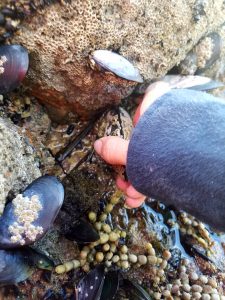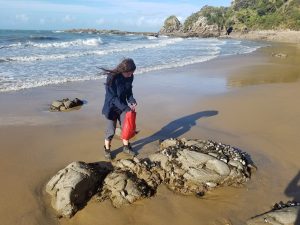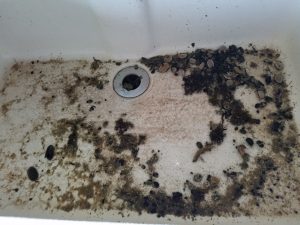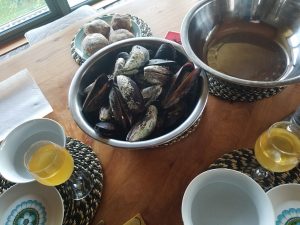Since meat is expensive and Kevin doesn’t produce his own source of meat, one of his favorite things to do is forage for mussels. Of course, I was extremely excited about the idea of going to the beach to find dinner! The native mussel here is called the green-lipped mussel, and it’s flavor is much more powerful than your typical black or blue mussel. Lined with a thin strip of an alluring, lush green color, these shells house a mushroom-like, rich pouch of briny meat. At certain places, like Tata beach where we went, each person is allowed to collect 25 mussels per day. Of course, the mussels can only be reached on certain days when the tides are right.

The place: Tata Beach

Twisting off a tasty treat

Filling up my bag!
The place of harvest had a strong flavor of its own, walls of curving sandstone smothered in a tropical-esque forest housed little inlets of golden sand and rocks bearing mussel treasure. We strolled up and down the long beach, in search of the fattest shells.Once we were satisfied with our lot, we drove away under the setting sun. Once home, the shells needed a good scrubbing before we steamed them. They had all sorts of kelp, mud clumps, barnacles, sea slugs, and things sticking out all over. Then they were placed in boiling water with garlic, olive oil, and herbs.

Our harvest, in all its grime and glory

The sink, post-cleaning

Our feast of mussels, served with home-baked buns made earlier in the day and persimmon wine